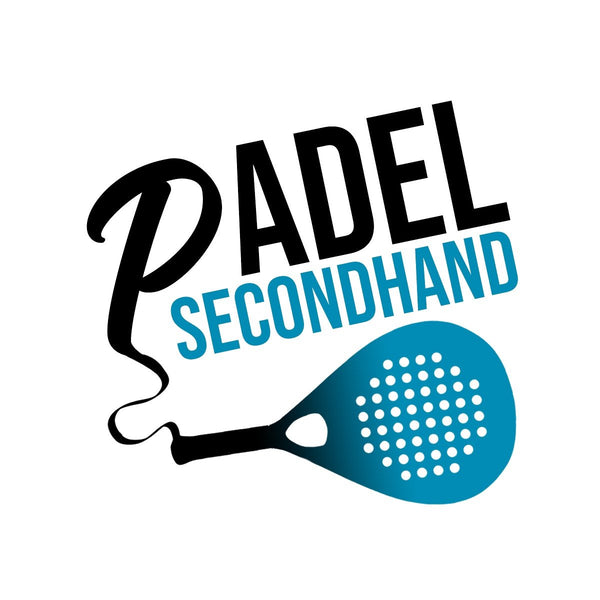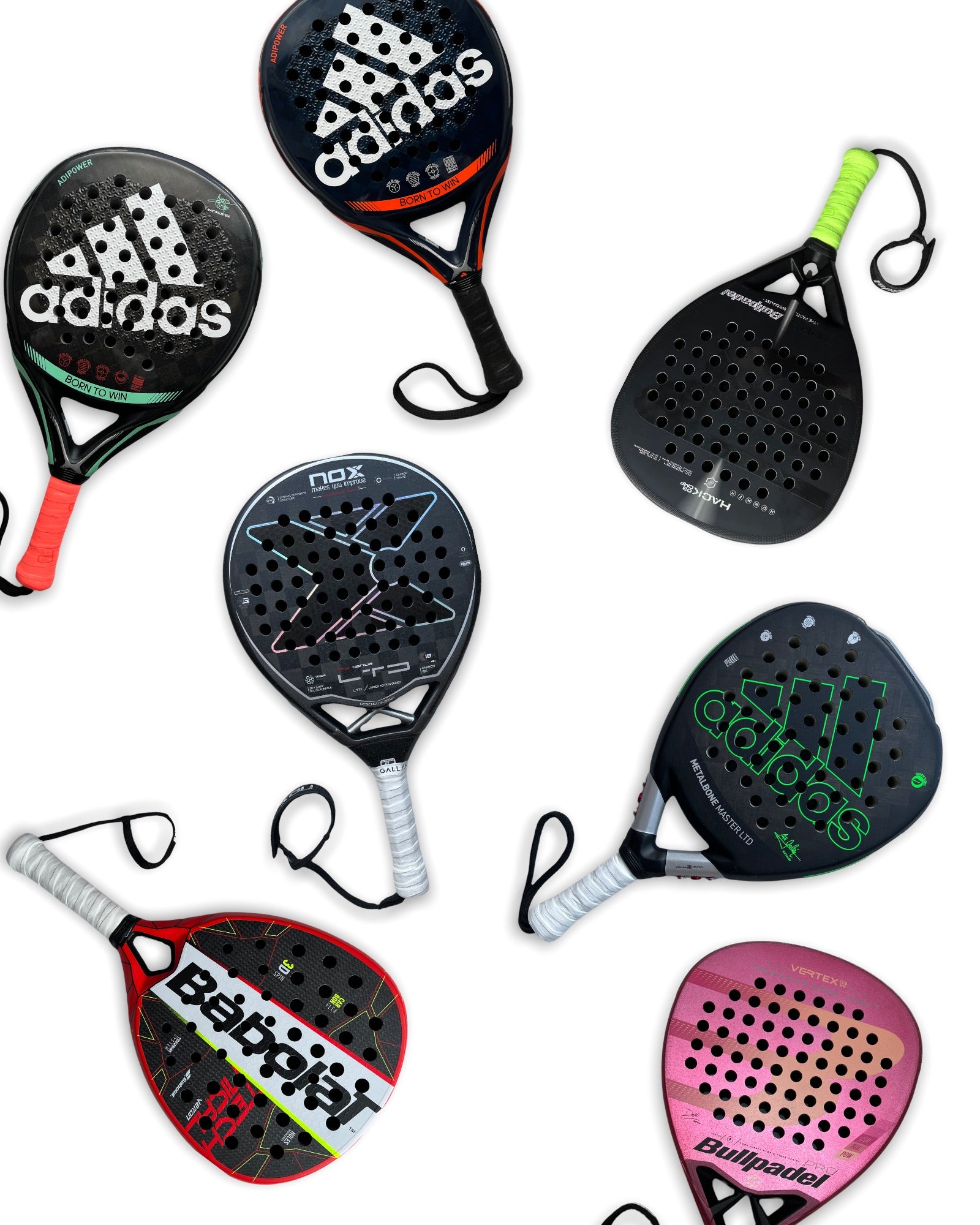
The racketguide
A guide where we explain the difference between different types of rackets.
A short introduction:
-
Weight:
The weight of rackets varies and can be decisive for your choice of racket. Usually the weight of padel rackets is between 340g-395g.
A light weight (340-360g) usually suits beginners or exercisers, but also the more talented players who are looking for an easy-to-maneuver racket. The heavier the racket becomes, the more it demands from you as a player. However, it generates more power than a lighter racket.
Something unique about us is that we always weigh and give exact weight on all used rackets, but also the majority of new ones too.
You will find " exact weight" under the racket's specifications.
-
Balance:
Padel rackets have different types of balance, i.e. how the weight is distributed in the racket. Namely, the position of the balance gives the racket different properties.
Low balance - The weight sits far down on the racket, close to the handle. This results in better control but less power. The racket generally becomes easier to play with.
Medium balance - The weight is evenly distributed, which will generate both power and control.
High balance - The weight sits high up on the racket. This results in a higher swing speed and more power. This type of balance is usually a little more difficult to master, but with the right training you can get a good power out of your hits.
-
Hardness/Surface:
The core in rackets has a varying hardness.
A softer core usually suits the beginner or the player who wants a little help with the speed of the shots.
A harder core requires that you follow through the shots more, but will then generate more speed than a softer core.
The surface of the rack usually consists of fiberglass or carbon fiber.
Fiberglass is usually found in the cheaper, simpler models and is softer than carbon fiber. This will help with speed, especially good for beginners.
Carbon fiber is a harder, more expensive material. This is usually found in the more expensive models. There are different types of carbon fiber, from 3K-24K, with 3K being the softest and 24K the hardest.
The harder the surface, the more the player has to punch through the shots to get good speed.
Three shapes, what's the difference?
It can be difficult to choose which shape of racket suits you best. We hope the information below clarifies and makes it easier for you to understand the difference.
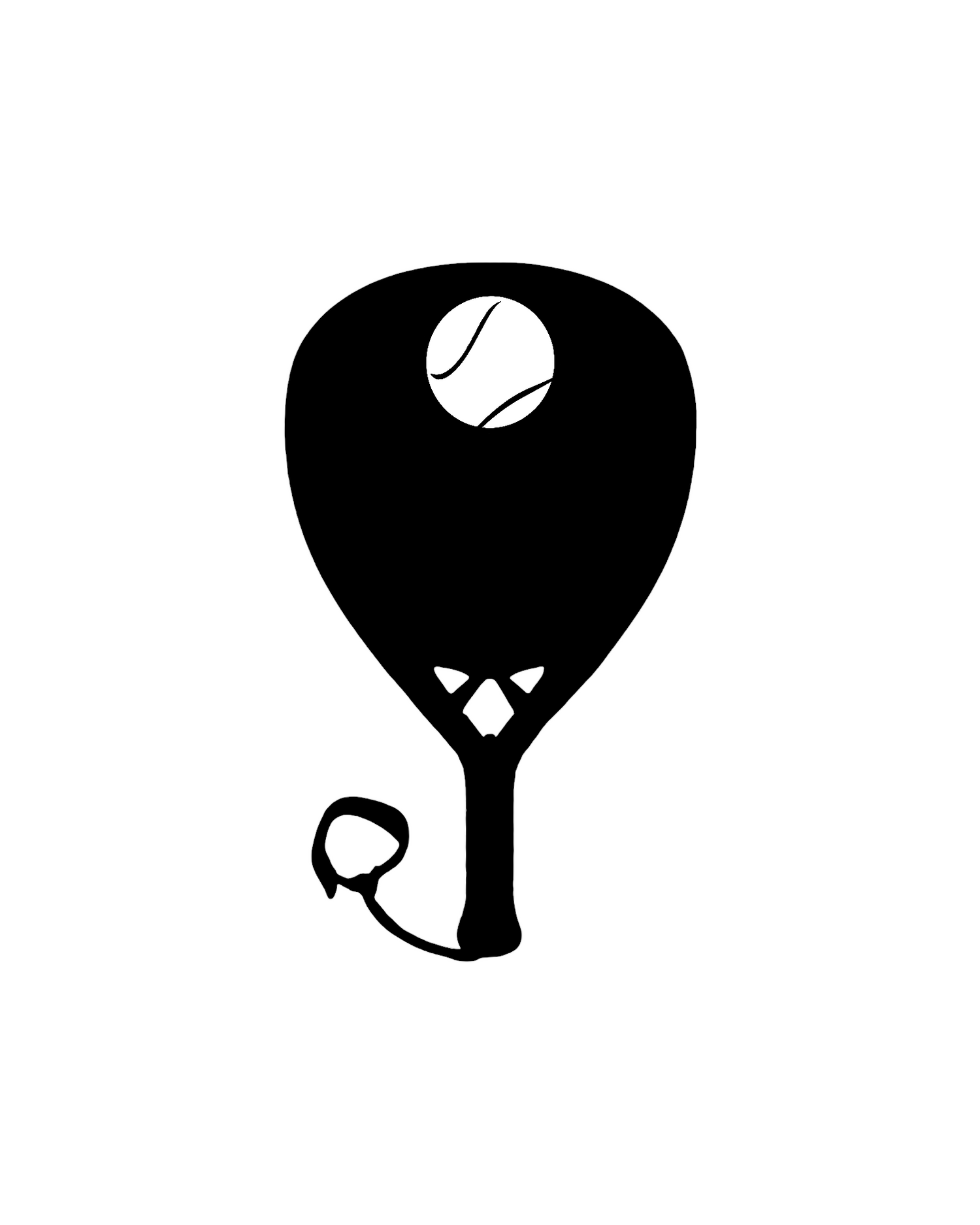
Diamond shape
Just as it sounds, the racket is shaped like a diamond. These rackets often have a high balance and are thus more front-heavy. A diamond-shaped racket usually suits the player with an offensive playing style as it will offer more speed. This means that the defensive controlling game becomes slightly worse with a diamond-shaped racket.
See the picture on the right. The ball shows you where to hit to get the most out of the racket.
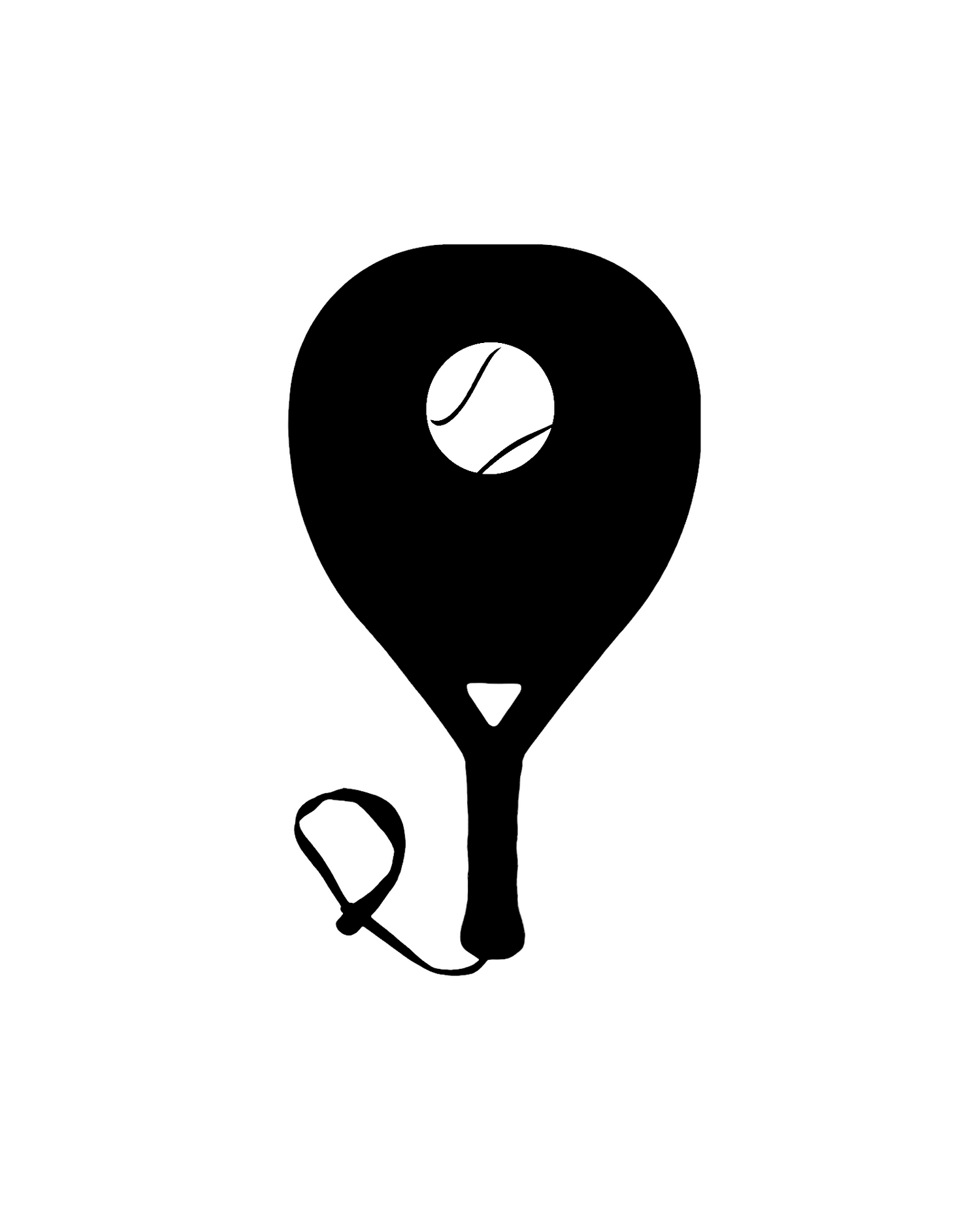
Drop shape
The racket is shaped like a drop and is therefore more defensive compared to a diamond-shaped racket. It can be said that a drop-shaped racket has a good combination of both speed and control. This means that the racket suits both offensive and defensive players who are looking for an all-round racket.
The balance point is generally in the middle of the racket, if not slightly above the middle.
See the picture on the left. The ball shows you where to hit to get the most out of the racket.
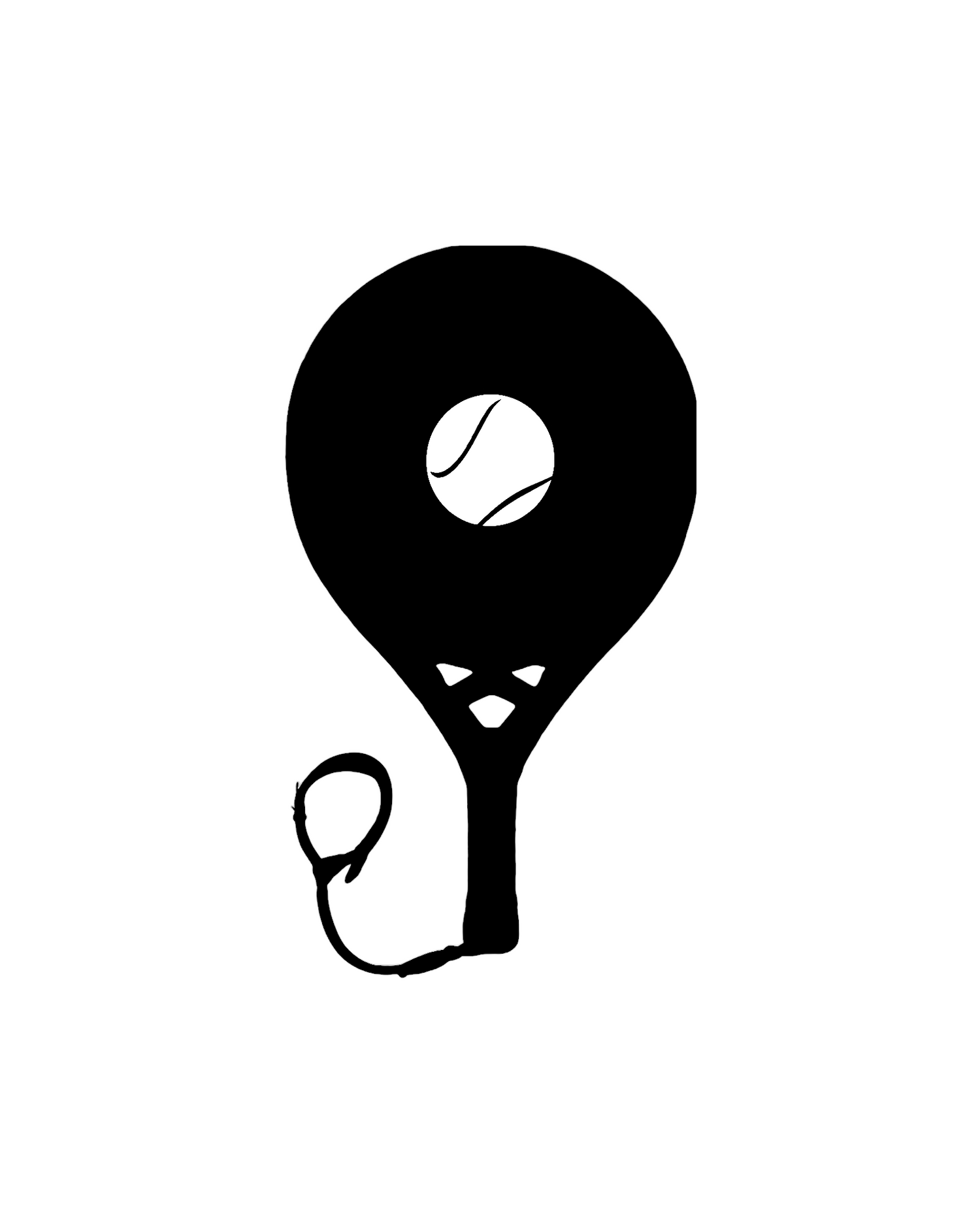
Round shape
Same here, just as it sounds, the racket is round in shape. These rackets often have a low/medium balance which gives good control in your game. This means that round shaped rackets are suitable for defensive players who seek precision in their shots.
Round-shaped rackets usually have a larger sweetspot (hit area where the ball gains speed), which means it is a good choice for the beginner as well as the skilled competitive player.
See the picture on the right. The ball shows you where to hit to get the most out of the racket.
